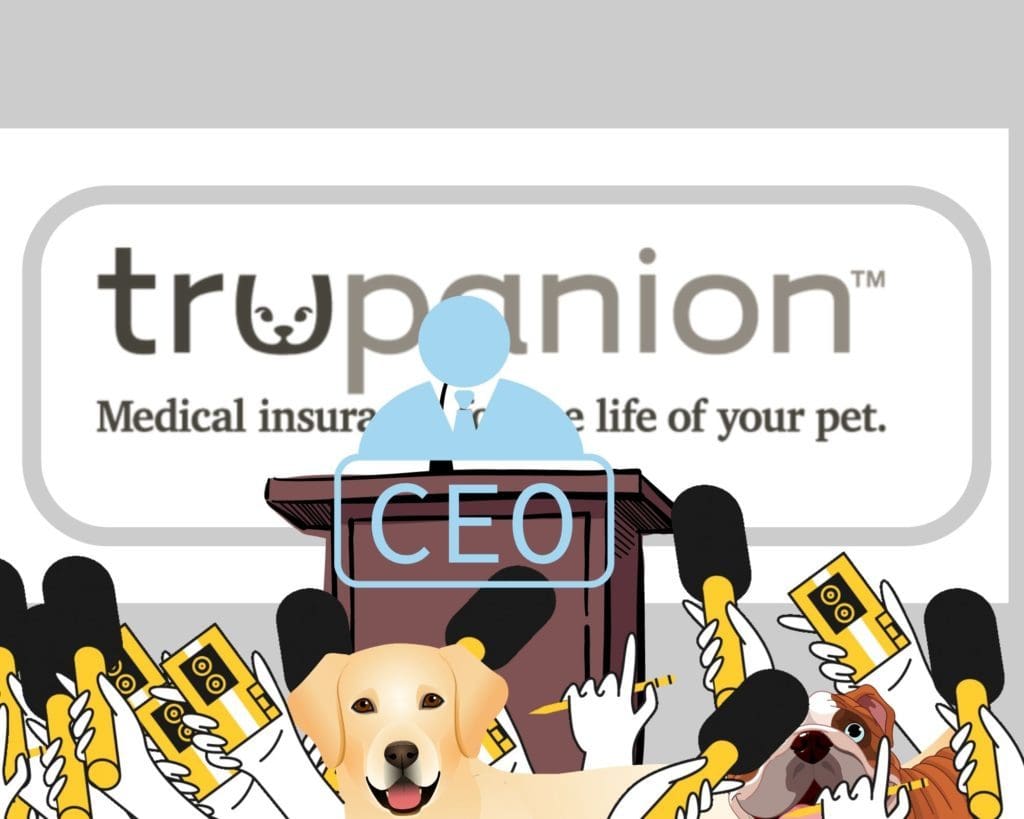Trupanion CEO talks loss ratios in exclusive interview
Trupanion remains the only company I’ve covered whose founder and CEO will engage reporters on this level. Next week, TCR will be on the ground in Seattle for the company’s annual meeting to shine more light into how Mr. Rawlings and his team are thinking about Trupanion and the future of the company.
Interview transcript Wednesday, May 17, 2023
EB: I’ll just get right into it. A 62.2 target loss ratio is something I’d expect to see on a Lemonade product, ASPCA Pet Insurance, but never Trupanion. And it’s in the New York filing and it’s in the California filing. I–can you help me, help me understand a target lost ratio of 62.2.
DR: So, some states define a loss ratio differently than other states–so different people use different nomenclatures. There’s a nomenclature called a medical loss ratio. There’s another term called a loss adjustment expense. And most people call the combination between a medical loss ratio and what you spend paying on the invoices the loss ratio. Um, so our target is our loss ratio, which is the total amount we’re spending to pay veterinary invoices to be 71 cents. So there are some states that defined loss ratio differently, so that could be, they think of that as a medical loss ratio. But if you look at our SEC filings, you can see what we’re actually spending, last quarter we actually spent 77 cents–on the dollar. Um, so there’s also a little bit of, what you put in with the state departments of insurance. Often you might put in something lower because they’re slower. If you put in your real target, you’ll always be running five points over your target.
So, at the end of the day, our goal is to, to spend 71 cents paying veterinary invoices. We’re currently doing more, but those can be the main differentials.
EB: The SEC filing says you spent, you spent over, right?
DR: 77 cents, 73.5 cents in 2022, 72 cents in 2021. So, uh, we’ve been, our customers have been getting a little bit more value than we promised– in 21 and 22. And in 23, in the first quarter, because vet inflation went up so much.
EB: So here, so here’s the other part I’m confused about, because the other part of the filings says that they weren’t approved. So New York never got approved. California’s still pending. So the other thing I Michael couldn’t answer, I’m hoping you can answer, is what, what’s the pl what’s the strategy as far as getting these rate hikes through? I understand the department of insurance takes forever, but that’s the, that’s the reality. They, they take forever. So what, what’s the, what’s the plan?
DR: So some states are fast and reliable, some are medium and reliable. Some are slow and reliable. A couple states that are typically slow have been slower than normal.
EB: Okay.
DR: so New York and California both lost a lot of their internal actuaries. So they’re just slower cause they don’t have enough people to get through their paperwork. So, you know, part of the strategy, I mean, a week after we get one approved, the next one will already go in. So, you just need to be proactive knowing it’s slow. So that’s part of the scenario. So New York has been a staffing issue.
EB: So you’re confident they’re going to get, the rates are going to get approved?
DR: Of course. It’s their job. Now, part of the challenge sometimes is you, you need to be able to justify stuff for them. Obviously we have the justification, but sometimes you have a new examiner who has to learn things from scratch again. And they’re like, can you explain how this works? And by the way, the official language, when they send back a question. So if they have a question that says, oh, um, uh, do you price cats different than dogs?
That question is called an objection.
EB: Okay.
DR: And it not an objection. It’s the question. They don’t, they’re like, I don’t understand this. Can you tell me? So one of the things that we will be trying to do in the future more — and this is based on feedback, um, over the last couple months is — our filings have historically been quite complicated.
EB: Okay.
DR: So, uh, we do filings that have a lot of factors, and we have over a million price categories. So, uh, there’s ways you can simplify it. So like, I’m just going to do a filing that is only has breeds in it. I’m only going to do a filing that just has neighborhoods in it.
EB: Got it. Got it.
DR: I’m only going to do a filing that has this in it. And the simpler you can make it, then it makes it easier on the actuaries on the other side.
EB: But, bottom line, it’s not a question of will they approve something. It’s just how long it takes.
EB: I just want to talk bigger picture. You always say that that Trupanion is recession resistant, and I know a lot of the issues that we’re seeing are related to inflation. And that’s industry wide. But, you know, we always talk about recession resistant, recession resistant. Is there going to be a point where a the products do become too expensive?
DR: It’s a good question, Emily.
EB: Thank you.
DR: 97% of pets are currently not insured. If veterinarians raise their rates so much, it will break the backs of the uninsured client before it’ll break the backs of the insured client.
EB: That’s a good answer, .
DR: Yeah. And I mean, it’s just, it’s just pure reality and the vets are already feeling it. Like the vets have staffing challenges. Yeah. And they’re trying to put through rates because they need it for their staffing issues, but, uh, economic euthanasia is up for uninsured clients.
EB: Do you have data on that? That’s interesting.
DR: I don’t want to give data on it because it’s, uh, um, I don’t want to paint the veterinarians in a negative. I mean, they, they need to do what they need to do for their business model. But that’s pull. Even if 50% of pets were insured, which I’m, I’m sure I’ll be dead before that happens, they have the other 50% of people that are uninsured. And so that has a control mechanism. Now, if we were like human health and a hundred percent of people are insured, or close to a hundred percent of people are insured, then you can run into different sets of problems.
EB: In five years, where is Trupanion going to be? I mean, I’m hearing — there are people who think you’re going to sell the company like tomorrow. There are people who think that, uh, that you’re not going to step down as CEO–
DR: Uh, who’s your audience for, for the, your story?
EB: My audience is everybody. I mean, I do have a lot of vets, but I imagine that for, for right now, I’ll have a lot of industry.
DR: What, like animal health industry?
EB: I mean, I have New York Times journalists and animal health industry and veterinarians, so I, I think, I think my audience is a lot of people.
DR: So, so let, I mean, I’m trying to answer your question Yeah. For the audience that you’re–
EB: I don’t think you should do that. I think you should just answer.
DR: Emily, it’s a pretty broad question. You have to admit.
DR: So, this is what I expect five years from now —
EB: Like, are you selling Trupanion to JAB?
DR: We’ll be a publicly traded company. That we will be in continental Europe. We will have, we’ll have doubled our addressable market. That we will have grown our active number of vet hospitals. That we work within five years substantially from where we are today. Yeah. Uh, in five years, we’ll still have probably another 15 to 20 years of runway ahead of us. We’ve now paid out, you know, uh, uh, like 2.3 billion in veterinary invoices in five years, that number will probably be double. More than that. And the demand and need for Trupanion will be greater in five years than it was five years ago. And today, in an environment where veterinarians are having to raise their rates faster, or the need for our product is greater today than it was last year.
EB: Is there anything you want to add? Just to double-check the value prop is-you’re still targeting 72 across the board and that has not–that has fundamentally not changed just to–
DR: We’re targeting 71, now 70. Our long-term goal is to move it to 72, but still with the 15% adjusted operating margin. We’re looking at getting to scale in some other areas in our business, and then give that back to the clients when we can. When we reach that scale.
EB: So, none of that has changed.
DR: Nothing’s changed. If you read my shareholder letter in 2014, nothing has changed since. Nothing has changed since 2014, except for, at that time, we were less than a hundred million of business. And today we’re over a billion.
related
TCR on the ground from Trupanion annual meeting in Seattle next week

